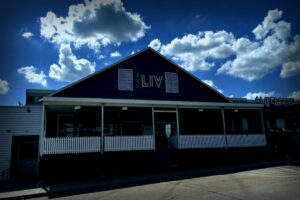NASA is on the verge of sending astronauts back to the moon for the first time in half a century, and the excitement is rising!
The Artemis II mission, scheduled for early next year, will see astronauts travel aboard the next-gen SLS rocket and Orion spacecraft.
While the crew won’t actually set foot on the lunar surface, they’re set to fly within about 4,000 miles (approximately 6,440 km) of it, flying around the moon before heading back to Earth.
This highly anticipated mission is projected to last around 10 days from launch to splashdown, making it 15 days shorter than the uncrewed Artemis I mission from 2022, which was primarily a test for Artemis II.
Recently, NASA provided an update detailing crucial enhancements made to the SLS rocket and Orion spacecraft post-Artemis I.
The towering SLS rocket stands at 322 feet (98 meters) and maintains its classic structure with a central core stage, four RS-25 engines, two solid rocket boosters, an interim cryogenic propulsion stage (ICPS), and an adapter linking the SLS to the Orion spacecraft.
For the Artemis II launch, NASA plans to drop the rocket boosters four seconds earlier than scheduled during the ascent phase. This adjustment reduces the weight the central core needs to manage after the boosters disconnect, enabling the rocket to either carry more cargo or heavier payloads into orbit. The mission will also help engineers validate their data through real-time comparisons.
During the initial flight with Artemis I, there were issues with turbulent airflow causing unexpected vibrations near the booster attachments. To address this, NASA has designed and added a pair of six-foot aerodynamic surfaces, which should ensure a smoother ascent.
In line with enhancing crew safety, optical targets will be installed on the ICPS to guide the Orion astronauts while they manually maneuver the spacecraft around the rocket’s upper stage. This practice will gather vital data for future docking operations in the Artemis III mission, set for 2027, when Orion is expected to connect with SpaceX’s Starship for its first crewed lunar landing since 1972.
The navigation and communication systems in the rocket have also been improved, with antennas repositioned for better signal strength and reliability with mission control back on Earth.
Moreover, NASA has fortified the emergency abort system to include a time delay in the self-destruct sequence, giving the crew additional time to clear the area in case of an emergency, thus enhancing their safety.
In other upgrades, the core stage’s power distribution control unit has been refined to bolster the management of electrical systems and minimize any hazards.
John Honeycutt, the program manager for SLS at NASA, expressed pride in their enhanced performance through Artemis I, emphasizing a focus on improving astronauts’ experience. According to him, some changes were adopted based directly on the mission requirements for Artemis II, while others stem from continuous analysis post-Artemis I.
Joining this groundbreaking mission will be NASA astronauts Reid Wiseman, Victor Glover, and Christina Koch, alongside Jeremy Hansen from the Canadian Space Agency. All four have been rigorously training together since their announcement as the Artemis II crew in 2023.





















